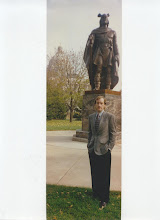I’ve always loved working outdoors and being a stable hand in Minnesota is a job suited to independent, industrious individuals like me.
You have to show up most every day, and early in the morning at that, but you get to see the days arrive and the seasons change.
It can be a hard job with constant demands on mind and body. You will be putting feed out in the morning, snow or rain. The animals have to be led to paddocks, tractors have to be warmed and maintained, fencing and stalls need to be mended and hay fields have to be worked.
As in all agricultural endeavors, the boarding of equine livestock is very much attuned to the seasons.
Spring brings greening pastures and hay fields, and the hassles of dealing with new foals. Oh sure they’re cute and everything; unless your the guy who’s got to lead mom and the youngster out to paddock. Or that new yearling alone for that matter, she’s all legs and coiled like a spring, gamboling to the pen. You better know what you are doing or you will get schooled.
But you get to see the song birds returning, every day a new arrival shows with the morning sun when you’re putting out the hay.
Barns are mended and fence lines repaired after the long winter. Maybe a new door is installed on the hay barn or the tack room is insulated for next year…
Many projects are started, all while the daily routine continues. Feed the horses, and then out to the pastures they go, clean the stalls, spread the manure on the field, add bedding to the stalls, bring down enough hay bales and prepare for the evening feed.
Order of operations and timing is important and needs to be considered at all times. You might as will not sweep the aisle until the bedding is in, or you can sweep twice, it’s your choice.
Summer is hot and hay is harvested. After working in the field bailing it, you get to put it up in the loft, heated from the mid day sun. Or, if you can park the hay wagons somewhere they won’t get wet, we can put it up tomorrow before morning chores, when it’s cooler, if you are willing to come in an hour early.
Fencing posts and boards are bought and installed, then painted. I have painted many length of white, two, three and four board fence line. Electrical fencing is put up or repaired and the water tanks fixed, or replaced and kept filled.
The sun is shinning and you should be making hay. Bailing hay is a hot, dusty, miserable job, unless everything goes just right, which it never does. Trucks break down, tires go flat, bales get stuck, and rain falls when you wish it didn’t….Then you have to get it back to the barn and up into the loft or in the hay shed.
Autumn is crisp and sometimes wet and windy. The horses are goofy with the autumn winds. Something is on the air, signals in the scents. They are all eyes and ears and sometimes a prancing and snorting.
Hopefully you have gotten in a third cutting of hay before the hard cold of November hits. It is time to button up the barn, shut the windows and staple some plastic over them and any unused doors on the old barn.
Park, lube and stow the summer equipment for the winter, it’s just around the corner. I like to walk the ground and give a shot of WD-40 to every hinge, bolt or snap-hook to prevent freezing in the winter. Very little is more frustrating than a frozen snaphook on a leadline with a hungry horse on the other end wanting release to get his morning hay.
Winter is the big test. Do you have enough hay and grain supplied? Is your water system up to the chilling challenge? Are you?
In and out with the horses in the winter is a bother. You must keep the doors and gates clear of snow and ice. On the brilliant white days with the bright sun you may have to stop at the door to adjust their eyes. Minnesota winters, with windy, cold hard days, test the metal, but are good for horse constitution, if you ask me.
Breaking frozen water buckets is time consuming and finger numbing, and must be done correctly or you will certainly be breaking buckets at about twenty dollars a pop.
Everything takes longer in the winter, and if you wear glasses they will fog up every time you come in from the cold. I just put mine on the shelf until all the livestock that is going outside is outside, then I can bring in the tractor and manure spreader, shut out the cold and get to cleaning stalls.
Year in and year out, as has been done for countless generations before me; I, along with many other Minnesota stablehands, continue the traditions created and maintained only by the hand on, day-to-day chores of a horse stable.
We do the same things that have been done since the harness was first put on the horse some six thousand years ago.
I have worked as a stable hand at many horse barns throughout Minnesota.
I hope that I can look forward to a fruitful future of gainful employment in my home state of Minnesota, as well as an opportunity to continue this legacy and train the next generation of Minnesota stable hands.
Although I am not a Stable Owner, I am glad to join the Minnesota Stable Owners Association as an associate. You can join too if you go to the link, here.
I have great expectations for our future good works on behalf of the horse livestock business specifically and Minnesota’s agricultural heritage in general.
Subscribe to:
Post Comments (Atom)

No comments:
Post a Comment